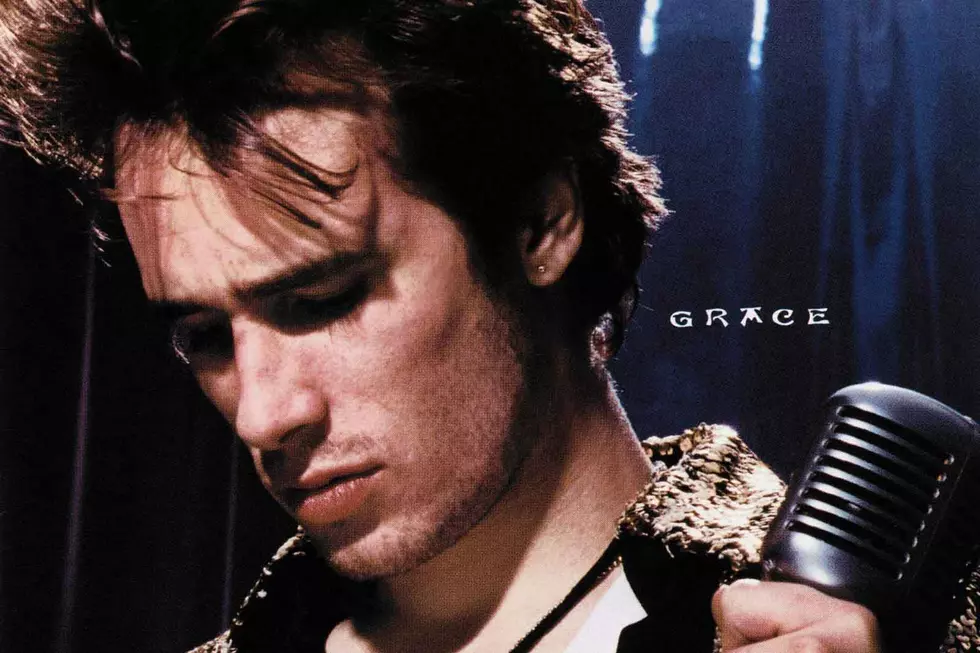
25 Years Ago: Jeff Buckley Releases Majestic Debut LP, ‘Grace’
The initial buzz on Jeff Buckley focused on the visual and vocal similarities to his dad, the late psychedelic-folk singer-songwriter Tim Buckley. But it wasn't long before Jeff, who was eight when his father died of a heroin overdose at the age of 28, became one of the most distinctive artists of his generation.
Word started to spread in November 1993, when Columbia Records released a four-song EP called Live at Sin-é that was recorded at a New York City coffeehouse and included two original songs, an old French tune and a sprawling 10-minute take on Van Morrison's jazz-speckled "The Way Young Lovers Do," the most upbeat number on his 1968 free-form folk classic Astral Weeks.
But it was on Aug. 23, 1994 – when Grace, the first and only Buckley studio album released during his lifetime, came out – that the buzz became deafening. In the middle of the grunge era, and just four months after the genre's patron saint Kurt Cobain died, Buckley arrived as an alt-rock singer who sounded nothing like his contemporaries. No growl. No bark. No pained howls pulled from the bottom of the gut. It was all much sweeter than that.
Buckley possessed a four-octave voice, which he wasn't shy about using on the cover songs that made up his live repertoire before, and after, Grace was released. Songs by Morrison, Led Zeppelin and Bob Dylan filled those concert sets and informed his studio work. His dad can be heard in that majestic voice, too.
It all amounted to a massive promotional push for Buckley and Grace. The title track and then "Last Goodbye" were released as singles and pushed at alternative-rock radio. And then, just like dad Tim, who cracked the Top 100 only one time with an album, Buckley's first LP bottomed out at No. 149 on the chart after a delayed Billboard entry nine months later.
Watch Jeff Buckley's 'Last Goodbye' Video
Two more singles – "So Real" and "Eternal Life" – followed, and like their predecessors, they made little impact outside modern-rock stations, where "Last Goodbye" was a modest hit that climbed into the Top 20. But it was a buried album track, a cover of an obscure Leonard Cohen song called "Hallelujah" from 1984, that eventually resonated with the mainstream.
By then, Buckley was dead. On May 29, 1997, he and his band were in Memphis working on his second album. Buckley went swimming in a local harbor when a tugboat passed and he went under. Less than a week later, his body – clean of alcohol and drugs – was found. He was 30 years old.
It took a decade after Buckley's death for "Hallelujah" to be commercially released as a single. At that time, it had been featured in tons of TV shows and movies, became a favorite among reality-show hopefuls and turned into one of the most overplayed and misunderstood songs of the 21st century. It got to the point where "Hallelujah" and all of its lauded cover versions – which spanned from John Cale's earliest to Rufus Wainwright's, featured in the first Shrek movie – were tuned out by all but the most easily pacified music fans.
But it helped Grace's legacy grow in that time, until it became a classic record of the era, right up there with albums by Nirvana, Oasis and the Smashing Pumpkins.
The music he was working on at the time of his death was released in 1998 as a double album called Sketches for My Sweetheart the Drunk that widened the folk-inspired alt-rock of Grace. Collections of demos, live records and expanded versions of Grace itself followed. They all paint a tentative portrait of an artist who was just finding his artistic footing after the release of his one album. But that one studio project is now a milestone of the era, a mere hint of an abbreviated career that never had the chance to reach its full potential.
Top 100 Rock Albums of the '90s
More From Ultimate Classic Rock









